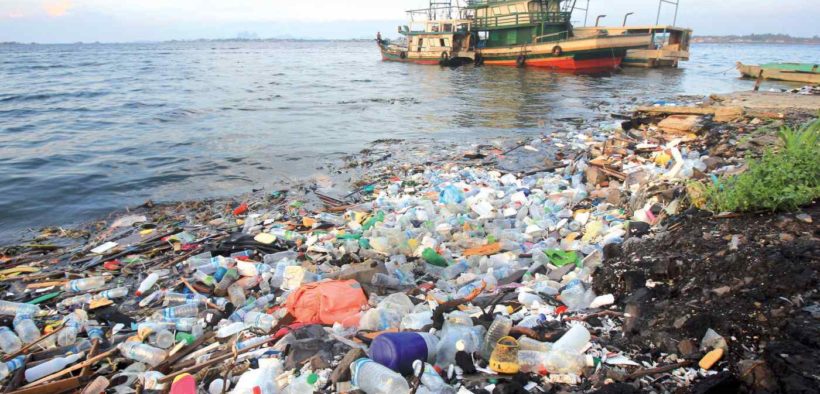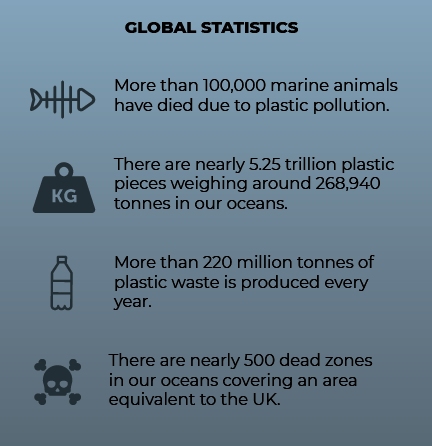Combating The Microplastic Menace

As the world struggles with the dangers of pollution caused by the use of plastics, states in India are banning the most dangerous of the lot
By Gayatri Namboodiri
Beat Plastic Pollution, went the theme for this year’s World Environment Day, which fell on June 5. The plastic menace is such that our oceans are choking and the marine life is dying a slow death. “Every year more than eight million tonnes end up in the oceans,” states the UN. If something is not done immediately then we will be leaving behind a toxic, garbage-filled earth for our children. While plastics in all forms are dangerous, it is microplastics that are the most harmful. These plastic particles are so small that they pass through the wastewater treatment plants and move on directly to the sea. They get piled up in the waters where the fish and other marine animals mistake them for food and consume them. In this manner, the microplastics get included in the food chain and eventually end up on our plate.
Microplastics, used in the production of cosmetic items like soaps, scrubs, body wash and detergents, are known to have damaging effects on the human body. With a size lesser than 5mm, microplastics are very difficult to dispose off and hence, end up entering the food cycle. Once consumed by the fish, they will be a part of our meal as well. Microplastics are harmful for human beings, as they are not broken down in the digestive system. The presence of microplastics in our bodies brings about drastic changes in our chromosomes, causing problems like infertility, obesity and cancer. Almost all the microplastics have cancer-causing elements, which will prove dangerous for us humans in the long run.Says Dr Deepa Gavali,
Microplastics Are Harmful For Humans As They Enter The Body Through The Food That We Eat. They Will Get Deposited In Our Organs Like Kidneys, Intestine, Food Pipes And Cause Potential Life-Threatening Diseases Like Cancer.
Dr Deepa Gavali
Acting Director, Gujarat Ecology Society
Acting Director, Gujarat Ecology Society, Vadodara: “Microplastics are harmful for humans as they enter the body through the food that we eat. They will get deposited in our organs like kidneys, intestine, food pipes and cause potential life-threatening diseases like cancer”. Governments all over the world are only now waking up to this menace. These types of plastics are manufactured in a manner that make them resistant to degradation. Most city and town corporations do not have proper waste treatment systems in place and so the microplastics are dumped just like that, paving the way for potential environmental disasters.
In order to combat this, countries are now banning the use of microplastics. The United States has banned using microbeads in personal care products since 2015. Britain brought in the ban from January 2018 while regulations were set in Italy and New Zealand by May. In India, most recently, the Maharashtra government had announced the ban on the use of microplastics with huge fines on people violating the same. What followed was an outcry from small level businesses and the public.
Saurabh Gupta, Founder and Director, Earth5R, a Mumbai-based environmental NGO, is of the opinion that while the ban of single-use plastic is good, the entire plan was not executed in a proper manner. The single use plastic, which is banned, can actually be recycled and thus has affected many low-income recycling businesses. “What should actually have been banned are packaging plastics that are non-degradable and are harmful for the environment.”
When asked about how the general public has responded to the ban, he said that people have more or less responded positively. They are looking at other alternatives to plastic as they are feed up of garbage and want to be more environmental friendly. “People are now more conscious and the response from all over Maharashtra has been better than expected.
”While the ban on use of microplastics is a small step in the right direction, a lot more needs to be done to save our oceans from becoming dumping grounds. When our oceans suffer, the marine life gets affected and ultimately, our children will have to pay a heavy price for our carelessness. Governments must work in collaboration with the general public to make the Earth a better place for future generations.

Micropalstics = Marine Pollution
8 million tonnes of microplastics are dumped in the oceans annually. Eighty per cent of the marine pollution comes from land sources like agricultural and pesticide waste, untreated sewage, etc. Plastic waste in the ocean does not degrade. It breaks down into smaller pieces and mixes with microplastics like microbeads. Microplastics and the toxins they release badly affect marine life, ultimately contaminating seafood products sold in markets.
Microplastics from fleece and synthetic clothing are released into the water with every wash. Being very tiny, they go undetected from the waste treatment systems and end up polluting the ocean. Tonnes of waste, including microplastics, have led to the creation of many low oxygen or hypoxic areas known as dead zones in the ocean. Marine life cannot sustain in these areas; so it has lead to the collapse of certain ecosystems.
8 million tonnes of microplastics are dumped in the oceans annually. Eighty per cent of the marine pollution comes from land sources like agricultural and pesticide waste, untreated sewage, etc.
















